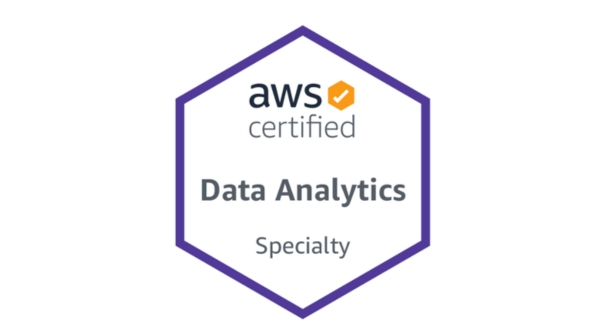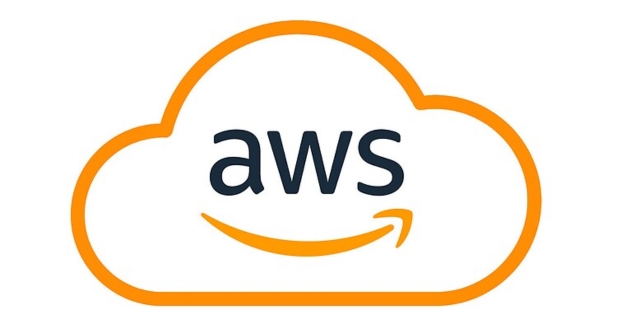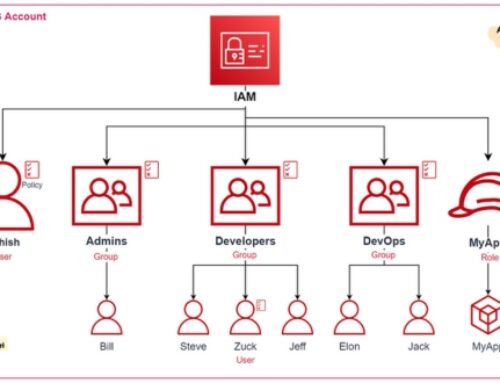Introduction to AWS Blockchain Services

Overview of AWS Blockchain Services:
AWS provides various services that enable developers and organizations to build, deploy, and manage blockchain networks and applications efficiently.
These services are designed to simplify the process of implementing blockchain solutions by offering scalable infrastructure, managed services, and integration capabilities.
Explanation of Blockchain Technology:
- Blockchain technology is a decentralized, distributed ledger system that enables secure and transparent transactions without the need for intermediaries.
- It consists of a chain of blocks containing records of transactions, cryptographically linked together and replicated across multiple nodes in a network.
- The key features of blockchain include immutability, transparency, security, and decentralization, making it suitable for various use cases such as supply chain management, finance, healthcare, and more.
Benefits of Using AWS for Blockchain Development:

- Scalability: AWS offers scalable infrastructure and computing resources, allowing blockchain networks to accommodate growing transaction volumes and user bases.
- Security: AWS provides robust security features, including encryption, access control, and compliance certifications, to ensure the confidentiality and integrity of blockchain data.
- Managed Services: AWS offers managed blockchain services such as Amazon Managed Blockchain, which simplifies the process of creating and managing blockchain networks without the need for manual configuration.
- Integration: AWS blockchain services integrate seamlessly with other AWS offerings, such as storage, databases, analytics, and machine learning, enabling developers to build comprehensive blockchain solutions.
- Cost-effectiveness: AWS follows a pay-as-you-go pricing model, allowing businesses to only pay for the resources they use, which can result in cost savings compared to traditional infrastructure setups.
Designing Blockchain Applications on AWS
Defining the requirements of the blockchain application:
This step involves understanding the purpose and goals of the blockchain application. It includes determining factors such as the type of data to be stored on the blockchain, the expected transaction volume, the level of decentralization required, regulatory compliance needs, and user accessibility. By clearly defining these requirements, developers can make informed decisions throughout the design and implementation process.
Choosing the right consensus mechanism:
Consensus mechanisms play a crucial role in ensuring the integrity and immutability of data on a blockchain network. AWS offers various options for implementing consensus mechanisms, including proof of work (PoW), proof of stake (PoS), practical Byzantine fault tolerance (PBFT), and more. The choice of consensus mechanism depends on factors such as the desired level of decentralization, scalability requirements, energy efficiency, and security considerations.
Designing smart contracts using AWS services:
Smart contracts are self-executing contracts with the terms of the agreement directly written into code. On AWS, developers can leverage services like Amazon Managed Blockchain or AWS Lambda to design, deploy, and execute smart contracts. These services provide tools and frameworks for writing smart contract code in languages like Solidity (for Ethereum-based blockchains) or Chaincode (for Hyperledger Fabric-based blockchains). Additionally, AWS offers various development tools, such as AWS CloudFormation, AWS SDKs, and AWS Amplify, to streamline the smart contract development process.
Integration with other AWS services:

Integrating blockchain applications with other AWS services enables developers to leverage the full capabilities of the AWS ecosystem. This includes integrating with storage services like Amazon S3 for storing off-chain data, leveraging AWS Key Management Service (KMS) for managing cryptographic keys, using AWS CloudWatch for monitoring blockchain network performance, and integrating with AWS Identity and Access Management (IAM) for managing user access controls. Integration with other AWS services enhances the functionality, security, and scalability of blockchain applications deployed on AWS.
Designing blockchain applications on AWS requires careful consideration of requirements, consensus mechanisms, smart contract design, and integration with other AWS services to ensure a robust and efficient solution. By leveraging AWS’s comprehensive suite of tools and services, developers can build and deploy blockchain applications that meet the needs of various use cases, from supply chain management to decentralized finance (DeFi) and beyond.
Setting Up AWS Blockchain Infrastructure
Creating an AWS Account:
To begin, you need to create an AWS account if you don’t already have one. This involves providing necessary information such as your email address, contact details, and payment method.
Once your account is created, you can access the AWS Management Console.
Accessing AWS Management Console:
The AWS Management Console is the web interface provided by AWS for managing various services and resources.
After logging in to your AWS account, you can access the Management Console to start setting up your blockchain infrastructure.
Choosing the Appropriate Blockchain Service:
- Amazon Managed Blockchain: This service simplifies the creation, management, and scaling of blockchain networks using popular frameworks such as Hyperledger Fabric and Ethereum. It automates tasks such as node provisioning, network configuration, and software updates.
- Amazon Quantum Ledger Database (QLDB): QLDB is a fully managed ledger database that provides a transparent, immutable, and cryptographically verifiable transaction log. It’s designed for applications that require a centralized, authoritative data source.
- Other services like Amazon Managed Blockchain for Ethereum (currently in preview) may also be available depending on the AWS roadmap at the time of setup.
- Depending on your specific requirements, you’ll choose the appropriate service for your blockchain infrastructure.
Configuring Network Settings and Permissions:
- Once you’ve chosen the blockchain service, you’ll need to configure network settings such as the network name, member configuration (for Amazon Managed Blockchain), and other parameters relevant to your blockchain network.
- Permissions play a crucial role in AWS blockchain infrastructure setup. You’ll need to define IAM (Identity and Access Management) roles and policies to control access to resources within your blockchain network. This includes permissions for creating and managing nodes, accessing data, and performing administrative tasks.
- Additionally, you may configure network settings such as VPC (Virtual Private Cloud) configurations, security groups, and other network-related parameters to ensure proper isolation and security of your blockchain network.
Securing AWS Blockchain Networks
Implementing Security Best Practices on AWS:
This includes following AWS’s best practices for security, such as configuring Identity and Access Management (IAM) roles and policies to restrict access to only authorized users and services, using Virtual Private Clouds (VPCs) to isolate blockchain network resources, implementing network security groups and firewalls to control inbound and outbound traffic, regularly updating and patching system software, and utilizing AWS’s managed services whenever possible to leverage their built-in security features.
Encryption Techniques for Securing Data on the Blockchain:
Encryption plays a crucial role in protecting sensitive data on the blockchain. AWS offers various encryption services such as AWS Key Management Service (KMS) for managing cryptographic keys, AWS CloudHSM for hardware-based key storage and cryptographic operations, and Amazon Managed Blockchain’s built-in encryption capabilities. Implementing encryption ensures that data stored on the blockchain remains confidential and tamper-proof, providing a secure environment for transactions and sensitive information.
Access Control Mechanisms:
Controlling access to blockchain resources is essential for preventing unauthorized access and ensuring data integrity. AWS IAM allows you to define fine-grained access policies, specifying who can access specific resources and what actions they can perform. By carefully configuring IAM roles, permissions, and resource policies, you can enforce the principle of least privilege, granting only the necessary permissions to users, applications, and services. Additionally, AWS offers tools like AWS Identity Federation and AWS Single Sign-On (SSO) for centralized identity management and federated access control across multiple AWS accounts and services.
Monitoring and Auditing Blockchain Networks on AWS:
Continuous monitoring and auditing are vital for detecting and responding to security incidents in real-time. AWS provides a range of monitoring and logging services, including Amazon CloudWatch for collecting and analyzing logs, AWS Config for assessing resource configuration compliance, AWS CloudTrail for tracking API activity and changes to AWS resources, and Amazon GuardDuty for threat detection and security monitoring using machine learning algorithms. By configuring these services and integrating them with SIEM (Security Information and Event Management) solutions, you can gain visibility into blockchain network activity, identify suspicious behavior, and enforce compliance with security policies.
Securing AWS Blockchain Networks requires a comprehensive approach that combines security best practices, encryption techniques, access control mechanisms, and robust monitoring/auditing capabilities to protect sensitive data, prevent unauthorized access, and ensure the integrity and reliability of blockchain transactions and operations.
Scaling and Performance Optimization
Strategies for Scaling Blockchain Networks on AWS:
- Horizontal Scaling: Involves adding more nodes to the network to distribute the workload. AWS provides services like Amazon EC2 (Elastic Compute Cloud) for easily provisioning and managing virtual servers to scale horizontally.
- Sharding: Breaking the blockchain network into smaller, manageable pieces called shards, each processing a subset of transactions. AWS services such as Amazon RDS (Relational Database Service) or Amazon DynamoDB can assist in managing sharded databases efficiently.
- Partitioning: Dividing the network into partitions to reduce congestion and improve throughput. AWS offers tools like Amazon SQS (Simple Queue Service) or Amazon Kinesis for partitioning data streams and managing message queues.
- State Channels: Off-chain solutions that enable direct transactions between parties without involving the main blockchain, reducing the burden on the network. AWS can facilitate the deployment and management of off-chain infrastructure using services like Amazon ECS (Elastic Container Service) or AWS Lambda for serverless computing.
Performance Optimization Techniques:
- Database Optimization: Fine-tuning database configurations and indexes to improve read/write operations and reduce latency. AWS offers managed database services like Amazon Aurora or Amazon Neptune, which can automatically optimize performance based on workload patterns.
- Caching: Implementing caching mechanisms to store frequently accessed data and reduce the need for repeated blockchain queries. AWS provides services such as Amazon ElastiCache for deploying in-memory caches.
- Code Optimization: Optimizing smart contracts and blockchain application code to reduce execution time and gas fees. AWS tools like AWS CodeBuild and AWS CodePipeline can automate code testing, deployment, and optimization processes.
- Network Optimization: Configuring AWS networking features such as Amazon VPC (Virtual Private Cloud) to minimize latency and maximize throughput between blockchain nodes and clients.
Load Balancing and Auto-scaling Configurations:
- Elastic Load Balancing (ELB): Distributing incoming traffic across multiple EC2 instances to ensure optimal resource utilization and high availability. ELB automatically scales with the workload and redirects traffic away from unhealthy instances.
- Auto Scaling Groups: Automatically adjusting the number of EC2 instances based on predefined metrics such as CPU utilization or network traffic. AWS Auto Scaling helps maintain a consistent performance level while minimizing costs by scaling resources up or down as needed.
Monitoring and Analyzing Performance Metrics:
- CloudWatch: AWS CloudWatch provides monitoring and logging services to track various performance metrics such as CPU utilization, network traffic, and database latency. Custom dashboards and alarms can be set up to alert administrators of any performance issues.
- AWS X-Ray: A distributed tracing service that allows developers to analyze and debug performance bottlenecks in blockchain applications. X-Ray provides insights into request processing times, API latency, and database query performance, helping optimize application performance.
Developing Smart Contracts with AWS
Introduction to Smart Contracts:
- Understand the concept of smart contracts, including their benefits and use cases.
- Learn about blockchain technology and how it underpins smart contract functionality.
- Explore different blockchain platforms supported by AWS, such as Ethereum, Hyperledger Fabric, and Corda.
Writing Smart Contracts using AWS Services:
- Utilize AWS services like Amazon Managed Blockchain, which simplifies the creation and management of blockchain networks.
- Choose a blockchain platform compatible with smart contracts (e.g., Ethereum for Solidity-based contracts).
- Write smart contracts using programming languages supported by the chosen platform (e.g., Solidity for Ethereum).
- Leverage AWS Lambda, a serverless computing service, to create serverless functions that interact with smart contracts.
Deploying Smart Contracts on the Blockchain Network:
- Configure and deploy the blockchain network using Amazon Managed Blockchain or other AWS-managed blockchain services.
- Deploy smart contracts to the blockchain network using tools provided by the chosen blockchain platform (e.g., Truffle for Ethereum).
- Ensure proper permissions and access controls are set up for deploying contracts securely.
Testing and Debugging Smart Contracts:
- Implement unit tests and integration tests for smart contracts to ensure their functionality and reliability.
- Utilize debugging tools and techniques provided by the chosen blockchain platform.
- Test the integration of smart contracts with other components of the application or system.
- Monitor and analyze contract performance and behavior using AWS monitoring and logging services.
The process of developing smart contracts with AWS involves a combination of understanding blockchain technology, writing code for smart contracts, deploying them on a blockchain network, and ensuring their correctness and performance through testing and debugging. By leveraging AWS services, developers can streamline and simplify various aspects of the smart contract development lifecycle.
Managing and Maintaining AWS Blockchain Networks
Routine maintenance tasks:
- Regular monitoring of the blockchain network for performance, security, and health.
- Monitoring resource utilization such as CPU, memory, and storage to ensure optimal performance.
- Checking for software updates and patches for the blockchain platform and associated services.
- Managing user access and permissions to the blockchain network.
- Reviewing logs and audit trails for any suspicious activities or anomalies.
- Implementing best practices for data encryption, access control, and identity management.
Upgrading blockchain network components:
- Planning and executing upgrades to the blockchain platform, including both software and hardware components.
- Testing upgrades in a staging environment to ensure compatibility and minimize disruption to production systems.
- Updating smart contracts and consensus protocols as needed to incorporate new features or address security vulnerabilities.
- Communicating with stakeholders about upcoming upgrades and any potential impact on operations.
Backup and disaster recovery strategies:
- Implementing automated backup mechanisms to regularly capture the state of the blockchain network, including transaction data, smart contracts, and configuration settings.
- Storing backups securely in redundant locations to guard against data loss due to hardware failures, natural disasters, or malicious attacks.
- Establishing recovery procedures to restore the blockchain network quickly in the event of a disaster, including failover mechanisms and data restoration processes.
- Testing backup and recovery procedures regularly to ensure they are effective and up to date.
Troubleshooting common issues:
- Identifying and diagnosing common problems that may arise in the blockchain network, such as performance degradation, synchronization issues, or transaction failures.
- Analyzing logs, metrics, and other monitoring data to pinpoint the root cause of issues and develop appropriate solutions.
- Collaborating with development teams and technical support to resolve complex or persistent issues.
- Documenting troubleshooting procedures and best practices for future reference.
- Implementing preventive measures to minimize the occurrence of known issues and vulnerabilities.
Compliance and Regulatory Considerations
Compliance Requirements for Blockchain Applications:
Blockchain applications often deal with sensitive data, financial transactions, or personal information. Therefore, they must adhere to various compliance requirements based on the industry they operate in. For example, financial blockchain applications must comply with regulations like Know Your Customer (KYC), Anti-Money Laundering (AML), and Counter-Terrorist Financing (CTF) regulations.
Other sectors, such as healthcare, might need to comply with regulations like the Health Insurance Portability and Accountability Act (HIPAA) in the United States or similar data protection laws in other regions.
GDPR and Data Privacy Considerations:
The General Data Protection Regulation (GDPR) is a comprehensive data privacy regulation enacted by the European Union (EU). It applies to any organization processing personal data of EU citizens, regardless of where the organization is located. Blockchain applications need to ensure that they comply with GDPR principles such as data minimization, purpose limitation, and data subject rights.
GDPR compliance on the blockchain can be challenging due to its decentralized and immutable nature, which contradicts certain GDPR requirements, such as the right to erasure (right to be forgotten). Solutions such as off-chain storage for sensitive data or privacy-focused blockchain architectures are often explored to address these challenges.
Regulatory Frameworks for Blockchain Technology:
Governments and regulatory bodies worldwide are still grappling with how to regulate blockchain technology effectively. While some jurisdictions have embraced blockchain innovation and implemented supportive regulatory frameworks, others have taken a cautious approach due to concerns about consumer protection, financial stability, and potential misuse for illicit activities.
Regulatory frameworks for blockchain technology may vary significantly from one jurisdiction to another, covering aspects such as taxation, securities regulation, consumer protection, and intellectual property rights. Developers and businesses operating in the blockchain space must navigate these diverse regulatory landscapes to ensure compliance and avoid legal pitfalls.
Implementing Compliance Controls on AWS:
Amazon Web Services (AWS) provides a range of cloud-based services and tools that can facilitate compliance with regulatory requirements for blockchain applications. This may include features such as encryption, access controls, auditing, and monitoring.
AWS offers various compliance programs and certifications, such as HIPAA compliance, SOC (Service Organization Control) reports, and GDPR compliance assistance. By leveraging these services and adhering to best practices in cloud security and compliance management, blockchain developers can strengthen the security and regulatory compliance of their applications hosted on AWS infrastructure.
Compliance and regulatory considerations are critical aspects of blockchain development, requiring careful attention to ensure legal compliance, protect user privacy, and mitigate regulatory risks. Leveraging appropriate tools and frameworks, such as those offered by AWS, can aid in achieving and maintaining compliance in the rapidly evolving landscape of blockchain technology.
Conclusion
In conclusion, AWS blockchain development offers numerous advantages such as scalability, security, and integration, but it also has limitations and challenges related to complexity, centralization, and regulatory compliance. By leveraging AWS blockchain solutions, organizations can address specific use cases such as supply chain management, financial services, healthcare, identity management, and voting systems. Looking ahead, the future of AWS blockchain development is likely to be characterized by continued innovation, increased industry adoption, and a focus on interoperability, regulatory compliance, and sustainability.
AWS supports popular blockchain frameworks such as Ethereum, Hyperledger Fabric, and Corda, among others, through its managed blockchain services.
Amazon Managed Blockchain is a fully managed service that makes it easy to create and manage scalable blockchain networks using open-source frameworks like Hyperledger Fabric and Ethereum.
AWS provides managed blockchain services that automate the deployment and management of blockchain networks, reducing the complexity of setting up and maintaining infrastructure.
Yes, AWS blockchain services can be integrated with various other AWS services like Amazon S3, AWS Lambda, Amazon RDS, and Amazon CloudWatch to build comprehensive blockchain solutions.
Some benefits include scalability, security, reliability, ease of integration with other AWS services, cost-effectiveness, and access to a wide range of tools and resources.








